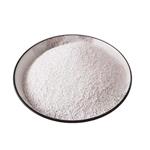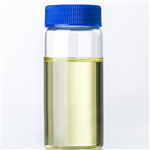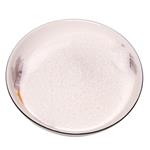What happens when you mix bleach and vinegar?
Mar 12,2024
Bleach and vinegar are common household cleaners that disinfect surfaces, cut through grime, and remove stains. But what you don't know is that mixing these two substances can produce toxic substances that can even be fatal!
Bleach consists primarily of 3-6% sodium hypochlorite (NaClO), also known as liquid bleach. Bleaching powder consists of a mixture of calcium hypochlorite calcium hypochlorite (Ca(ClO)2), calcium hydroxide (slaked lime, Ca(OH)2), and calcium chloride (CaCl2) in variable amounts. Vinegar is a combination of acetic acid and water made by a two-step fermentation process. First, yeast feed on the sugar or starch of any liquid from a plant food such as fruits, whole grains, potatoes, or rice. This liquid ferments into alcohol.
Sodium hypochlorite is made up of sodium, oxygen, and chlorine atoms. When this molecule is mixed with the acetic acid in vinegar or other acid types, it releases chlorine gas. Chlorine gas is hazardous to human health. It's so powerful that Germany used it during World War I as a chemical weapon.

Chlorine bleach contains sodium hypochlorite (NaOCl), but because it's dissolved in water, the chemical exists as hypochlorous acid (HOCl):
NaOCl + H2O ↔ HOCl + Na+ + OH–
Hypochlorous acid is so good at bleaching and disinfecting because it's a strong oxidizer. This also makes it good at participating in undesirable chemical reactions. Mixing bleach with an acid produces chlorine gas. For example, reacting bleach with hydrochloric acid makes water and chlorine:
HOCl + HCl ↔ H2O + Cl2
Vinegar contains diluted acetic acid rather than hydrochloric reaction, but chlorine is still produced:
2HOCl + 2HAc ↔ Cl2 + 2H2O + 2Ac–
You'll know there's a problem if the liquid suddenly smells very strongly of bleach (which is the odor of chlorine). If you see a faint yellowish-green haze, it's a sign of significant chlorine gas production. However, bleach and vinegar dilute, so the gas is generally invisible. Avoid breathing the vapor and immediately leave the area. Return only after the chlorine odor has dissipated. Immediately seek medical attention or call Poison Control if you experience burning or blistering eyes, skin, or mucous membranes or have trouble breathing.
- Related articles
- Related Qustion
- Is Sodium Hypochlorite an Acid or Base? Feb 28, 2024
Sodium hypochlorite solution is a weak base that is inflammable.
Rutin, also known as rutin, quercetin-3-rutinoside and locustin, is a plant pigment found in certain fruits and vegetables. It is also a biologically active herbal plant extract that is a natural flavonoid compound.....
Mar 12,2024Plant extractsMaybe. Nitrous oxide, also known as Whopper, Nitro, Buzz Bomb, Hippy Crack, etc., is a colourless, slightly sweet-smelling gas that can cause dizziness, a dreamy or floating sensation, and a painless state.....
Mar 12,2024APISodium hypochlorite
7681-52-9You may like
- Is indium antimonide an intrinsic semiconductor?
May 29, 2024
- Niobium carbide Crystal
May 17, 2024
- What is hafnium nitride crystal structure?
May 17, 2024
Sodium hypochlorite manufacturers
- Sodium Hypochlorite
-

- $1400.00 / 1T
- 2024-05-07
- CAS:7681-52-9
- Min. Order: 1T
- Purity: 98%
- Supply Ability: 20T
- Sodium hypochlorite
-

- $1.00 / 1g
- 2024-04-25
- CAS:7681-52-9
- Min. Order: 1g
- Purity: 99
- Supply Ability: 20tons
- sodium hypochlorite
-

- $0.00 / 1kg
- 2023-09-04
- CAS:7681-52-9
- Min. Order: 1kg
- Purity: 99%
- Supply Ability: 20tons




